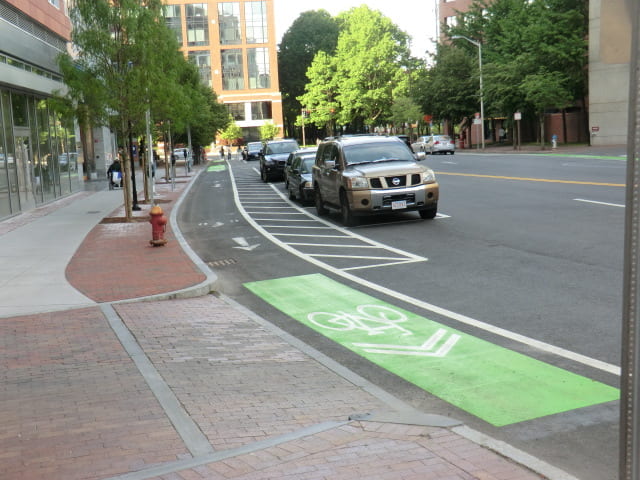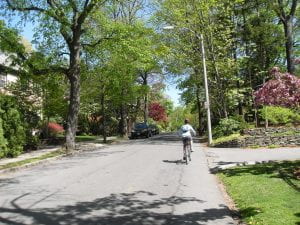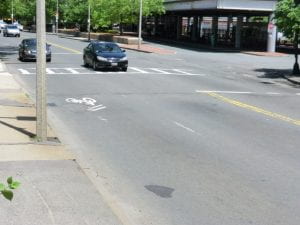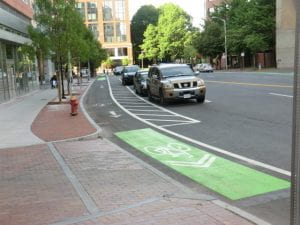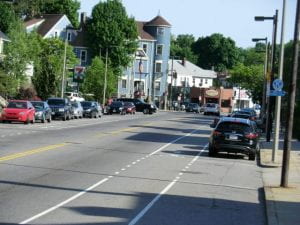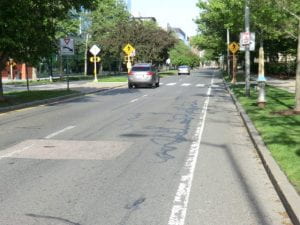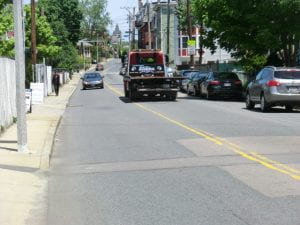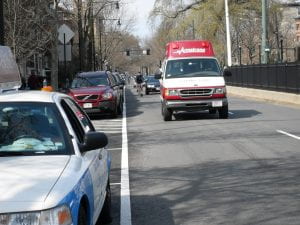Here are the most recent LTS criteria for road segments: LTS Tables v. 2.2, May, 2022
Older versions include v. 2, (June, 2017) and the Original (2012) criteria
The chief deterrent to riding a bike in the U.S. is the high stress of riding without protection from the danger of fast traffic, or, more briefly, traffic stress. Some streets have low traffic stress, while others have high stress. Sometimes a treatment such as bike lanes is effective in eliminating most of the traffic stress; but other times even where there’s a bike lane, it can be very stressful.
Over the years, a few different methods have been developed for classifying streets by how comfortable or stressful it is to ride there. However, they have many weaknesses, and none is widely known or used. Common weaknesses are giving no account to protected bike lanes or cycle tracks; not accounting for how bikes have to interact with cars on intersection approaches or at crossings; and using black-box formulas that makes it impossible for anybody to know how a street should be classified without running the numbers through a calculation program.
In 2012, I developed a new method for classifying streets, publishing it in a report with coauthors Maaza Mekuria and Hilary Nixon. It classifies streets into four levels of traffic stress (LTS) using simple rules that rely on data that’s either readily available or easy to acquire. The four levels of traffic stress are:
- LTS 1: Strong separation from all except low speed, low volume traffic. Simple-to-use crossings. LTS 1 indicates a facility suitable for children.
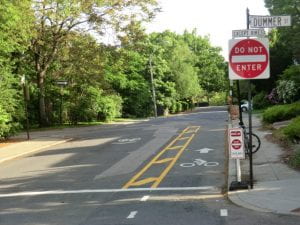
LTS 1: Contraflow, bikes have their own space on 25 mph street; with flow, mixed traffic @ 25 mph on a street with no centerline
- LTS 2: Except in low speed / low volume traffic situations, cyclists have their own place to ride that keeps them from having to interact with traffic except at formal crossings. Physical separation from higher speed and multilane traffic. Crossings that are easy for an adult to negotiate. Limits traffic stress to what the mainstream adult population can tolerate, those who are “interested but concerned” in the classification popularized by Portland, Oregon’s bike program.The criteria for LTS 2 correspond to design criteria for Dutch bicycle route facilities.
- LTS 3: Involves interaction with moderate speed or multilane traffic, or close proximity to higher speed traffic. A level of traffic stress acceptable to the “enthused and confident.”
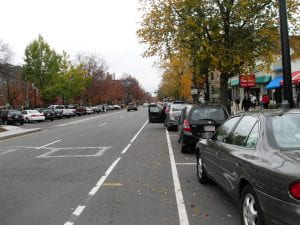
LTS 3: Bike lane next to parking on multilane street, in a commercial area in which bike lane is frequently blocked, forcing cyclists into traffic
- LTS 4: Involves being forced to mix with moderate speed traffic or close proximity to high speed traffic. A level of stress acceptable only to the “strong and fearless.”
Once a city’s streets have been classified by level of traffic stress, it’s possible to examine the network of low-stress streets. In some cases, that network may be greatly disconnected, with “islands” of low stress streets separated from one another by high-stress barriers. See here for methods of visualizing and analyzing the connectivity of a low-stress bike network.
